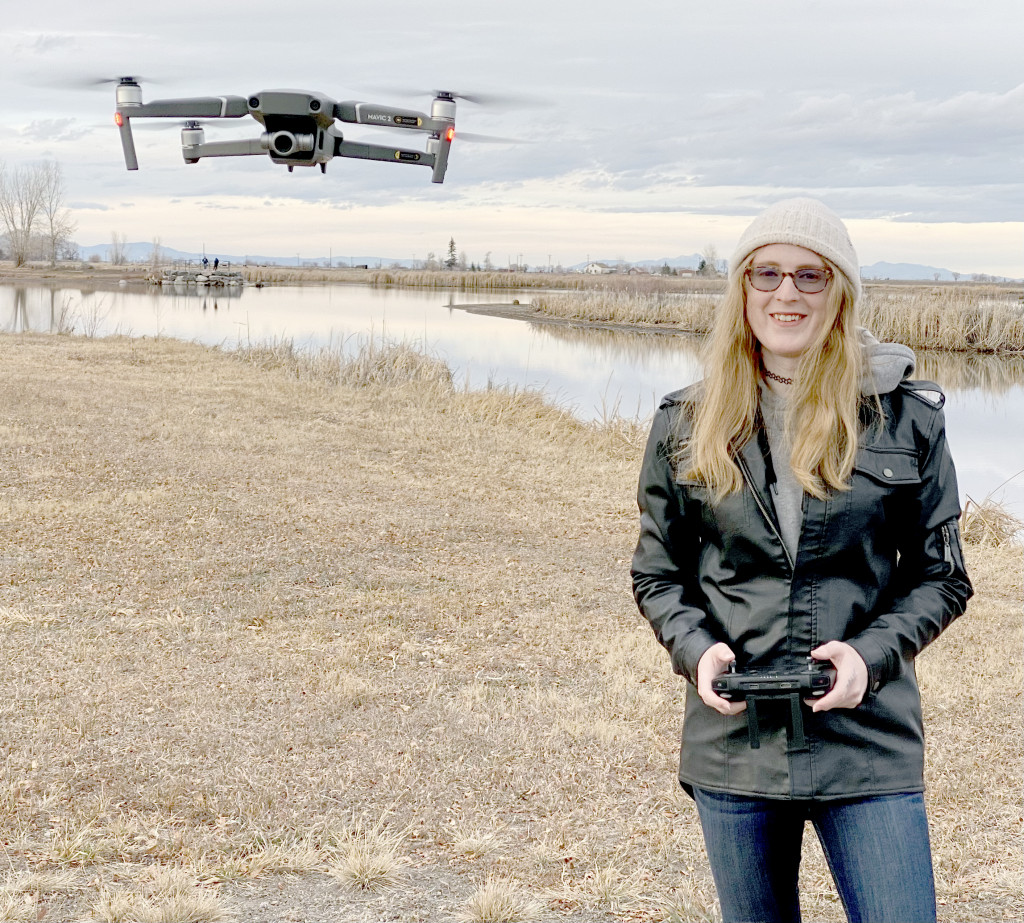Trinidad State is on the ground floor of coming drone revolution

ALAMOSA - A constellation of 1,800 drones gathered above the opening ceremonies of the Olympic Games in Tokyo recently. This breathtaking 3D aerial ballet, representing a spinning earth, was incredible in it’s precision, depth and choreography. It was a major leap forward from the 1,200 drones that formed the Olympic rings over Kosovo in 2018. Drones are ready to change our everyday lives, like microwave ovens did in the ‘70s.
Drones, also known as Unmanned Aerial Systems in the world of aviation, have become ubiquitous in today’s world. We aren’t talking military drones here, the ones that can drop a bomb on enemy targets from half a world away. I’m intrigued by the possibilities of helicopter-like drones that can deliver packages, and fixed-wing drones capable of spraying crops with pesticides. What started off as a niche hobby, is evolving into a vast industry with almost unlimited possibilities.
The commercial use of drones is one of the fastest growing industries in the U.S., and the San Luis Valley is positioned to become a major player in its development.
In 2015, the San Luis Valley was approved by the Federal Aviation Administration to be designated as an Unmanned Aircraft Systems testing site. This designation allows commercially licensed drone operators and researchers the ability to fly unmanned aircraft at altitudes of up to 15,000 feet - with the proper authorization - rather than the normal limit of 400.
In early 2020, Trinidad State College Valley Campus - located in Alamosa, Colorado - began offering its own drone program, taught by Dr. Evert Brown. This program gives students the resources and knowledge needed to complete an FAA examination and acquire a commercial license under the Part 107 UAS rules, also known as a Remote Pilot Certificate. The program also gives remote pilots the opportunity to complete more advanced certifications to further their knowledge and skill sets. “These pilots are going to be stewards of the air space,” said Dr. Brown. “Our students are going to know the rules and ethics. They will know when and where to fly. We’re building a cohort of pilots that truly are professionals.”
Due to the unique geography of the San Luis Valley, remote pilots have a vast combination of unique terrains and weather conditions to learn in, from vast forested mountain ranges, to the plains of the valley floor, at altitudes of 7,500 feet and higher. These factors create a unique and sometimes challenging environment, further increasing the skillsets of remote pilots.
As a graduate of the Trinidad State program, I use drones as a part of my own business. My primary focus is photography and videography, with an emphasis on the real estate market. I also utilize my skills and aircraft for public education and community relations. Often, when I am out on a job and meet people, I am the first remote pilot of a drone they have interacted with face to face. As remote pilots operating under the FAA, we have an obligation to educate the public and clear any misconceptions of what drones are and aren’t.
There are many industries that stand to benefit from the influx of commercial drone pilots. From targeted crop management, wildlife surveying, and monitoring the water levels of our rivers and reservoirs, to scientific research and monitoring wildfires.
One of the most useful opportunities for remote pilots is aiding emergency services such as search and rescue efforts, firefighters and police work. A drone can “see” what danger might await an officer just over that fence, or if there’s a person trapped in a remote canyon. Drones equipped with infrared cameras can identify and locate individuals easily, and can greatly expand the working area of civil services far beyond what they would otherwise be capable of covering for a fraction of the cost. In the future, we may even see the deployment of drones capable of delivering vital supplies to those in need in hard hit disaster areas, or people trapped in otherwise hard to reach locations.
The inspections of power lines, cell towers, and other infrastructure is already in demand across the nation, and when done by skilled remote pilots can decrease the risk involved when sending people to do the same job.
Real estate agencies are already jumping at the opportunity to hire skilled remote pilots. Drones can provide aerial photography and videos that give a unique perspective and selling points on properties.
As drone technology advances, the possibilities for their uses is expected to expand almost exponentially. From the delivery of goods, and maybe even transportation of people, to solar powered drones providing emergency communication networks, to disaster sites. Fixed-wing drones with flight times of hours, or even days could perform autonomous tasks beyond the endurance and capabilities of any single person.
In short, drones are here to stay, and even now creative thinkers are coming up with uses that will save money and yes, even lives.



